The US Government has greenlit a potential Foreign Military Sale of the Advanced Precision Kill Weapon System-II (APKWS-II) to the United Kingdom, with an estimated value of $31.2 million.
The Defense Security Cooperation Agency confirmed the approval in an official statement.
The proposed deal encompasses up to 768 APKWS-II All Up Round (AURs) (Single Variant), alongside support equipment, spare and repair parts, publications and technical documentation, transportation, and engineering, technical and logistical support services provided by the US Government and contractors.
https://twitter.com/geoallison/status/1652045229929766912
Additionally, other related elements of logistical and program support are included in the sale.
“The State Department has made a determination approving a possible Foreign Military Sale to the Government of the United Kingdom of Advanced Precision Kill Weapon System-II for an estimated cost of $31.2 million. The Defense Security Cooperation Agency delivered the required certification notifying Congress of this possible sale today.
The Government of the United Kingdom has requested to buy up to seven hundred sixty-eight (768) Advanced Precision Kill Weapon System-II (APKWS-II) All Up Round (AURs) (Single Variant). Also included is support equipment; spare and repair parts; publications and technical documentation; transportation; U.S. Government and contractor engineering, technical and logistical support services; and other related elements of logistical and program support. The total estimated cost is $31.2 million.
This proposed sale will support the foreign policy goals and national security objectives of the United States by improving the security of a NATO Ally that is a force for political stability and economic progress in Europe. The proposed sale will improve the United Kingdom’s capability to meet current and future threats by ensuring its aviation forces’ interoperability with United States and other allied forces as well as its ability to contribute to missions of mutual interest. By deploying the Advanced Precision Kill Weapon System, the United Kingdom would contribute to global readiness and enhance the capability for U.S. forces operating globally alongside them. The United Kingdom will have no difficulty absorbing this equipment into its armed forces.
The proposed sale of this equipment and support will not alter the basic military balance in the region. The principal contractors will be BAE Systems, Nashua, New Hampshire. There are no known offset agreements proposed in connection with this potential sale. Implementation of this proposed sale will require multiple trips by approximately five (5) U.S. Government representatives and the assignment of approximately five (5) contractor representatives to the United Kingdom on an intermittent basis for a period of approximately five (5) years to support delivery and integration of items and to provide supply support management, inventory control, and equipment familiarization.”
Designed as a precision-guided munition, the APKWS-II offers air-to-ground weapon capabilities to boost mission success rates while limiting collateral damage. The British Army’s AH-64E Apache attack helicopters are expected to employ these weapons.



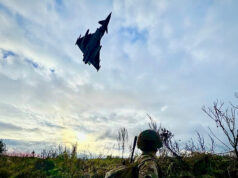
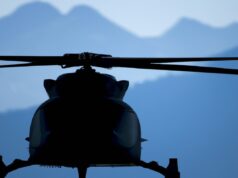

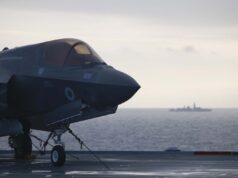


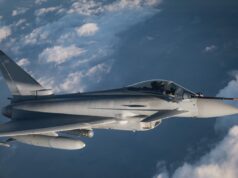
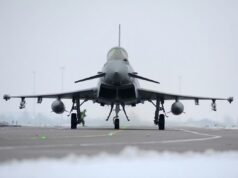
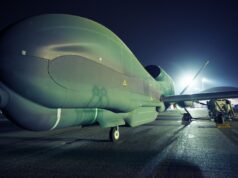


Are these made with the CVR7 rockets? Is that what the apaches used or was it just the fixed wing?
No they are Hydra 70.
Looks like CRV-7 is being retired this year as Apache is the last platform that can carry it. Unguided Hydra 70 are being purchased alongside the APKWS II. There will be more rockets than APKWS II so the unguided option will remain.
USA gives British company permission to export it’s products to Britain. lol
It works the exact same way if Lockheed Martin develops something in the UK and the US would like to buy it.
40000$ per rocket is a lot of money.
Not compared to a hellfire or brimstone. Makes sense to have a lower (not low) cost option for lesser targets. It would have been a blessing in the afghan days, seeing machine gun armed pick up trucks taken out by expensive anti armour weapons must make bean counters cry.
What doesn’t make sense is the number of them, that number wouldn’t last more than a few days intense combat.
Lessons re-learnt in current times forgotten already, but what’s new…
Exactly 768 units with 50 odd Apache plus training, failure and target practice.
Could it be 768 sets rather rather than rockets individually ??
It’s the guidance kits only. The Hydra 70 are being procured seperately. They will be procured in the thousands as they are replacing CRV-7 which is leaving service (hopefully to be sent to Ukraine…).
I was under the impression that CRV7 was a more powerful rocket. Whydid we not take CRV7 and bolt on the new guidance bit?
Why does the UK need permission to buy a bit from a UK company. Does it use US technology?
Because the CRV-7 has never been tested with APKWS which was designed for Hydra 70. No incentive for the manufacturers to do so as they make Hydra 70 as well.
APKWS is made by BAE Systems in the US, by the ex United Defence company that BAE purchased a while ago. In order to operate in the US the US Gov has quite wisely demanded that BAE have a ‘Chinese wall’ between its operations. If BAE wanted access to the enormous US Defence market that was the deal. If something is designed or built in the US then US Gov has to give export permission. We do the same.
APKWS was developed with US money for a US requirement ultimately…
Thanks – fare enough… it is a shame we could not have used the more powerful rocket…. might have given a longer range and more standoff.
Truth is it seems like CRV-7 is slowly disappearing as a product. It’s made by Bristol Aerospace in Canada (now part of Magellan). Canada has recently started to destroy a lot of its old stockpile (hopefully they’ve stopped and sent it to Ukraine…). With the failure of CRV-7PG, the laser guided version, to get any traction it looks like Magellan are slowly winding down production.
https://en.wikipedia.org/wiki/Bristol_Aerospace
Extract from Wiki:
Since the incorporation of ‘smart’ weapons for the CF-18, Bristol no longer makes CRV-7 motors for the Canadian military. Production has dropped over the years although several smaller contracts to allied air forces have kept the plant active. A purchase by the Royal Air Force for rocket motors was completed recently along with the sale of 200 redundant launchers that were in long-term storage. As of January 2010, the company has lost contracts with several countries and militaries around the world, thus causing layoffs at the Rockwood plant.
It’s not a massive facility…pity we won’t buy it out and move it all here…suspect Magellan would sell it for a song…
https://goo.gl/maps/hWrHArzgTEhVfv817
This could be just the first initial order. To test, train the guys, the pilots, the techs, get the logistics set up to store and maintain these weapons. Then further bulk orders will follow.
We can live in hope but like a lot the MOD does order I think low numbers, little reserve is the modus operandi
100% 👍🏻
• It’s a bargain low-price system for the capabilities it offers.
• We should be buying thousands.
Not sure about numbers? First batch, follow on orders?
Possible that UK, which is utilizing a common platform (AH-64E) and now a common weapon (APKWS-II) has also made a non-public agreement for access to US Army (USA) reserve stocks, under conflict conditions? If MoD had an interest in covering as many requirements as feasible w/in the constraint of a strictly limited budget, this could well be a candidate topic for backroom discussion and deal making. And really, if we are sharing a Trident 2 missile stockpile, is anyone going to suffer apoplexy over sharing some tactical munitions, in extremis? The important feature is that you Brits have bought into the weapon in a complete manner, so there would be little additional logistical burden on USA to provide munitions. Not certain this is reality, but believe it may be a close approximation thereof. 🤔
Leveraging US stock piles is a favourite of our service chiefs, only problem seems to be the US has been doing much the same and now none of us have enough.
Fair point, sad to acknowledge. ,☹️
You mean – the Treasury.
The real service chiefs.
This isn’t sensible for two reasons. Firstly if there was a serious war, the US would priorites the stocks for it’s own troops leaving ours without. As is happening to Wagner. Secondly it means we are reliant on the US agreeing for us to access them should a war not involve them and not be in their polictical interests.
Agreed
Your comments don’t make sense, but what’s new.
You just ain’t bright enough to understand petal.
I’d say you aren’t even remotely interested in defence. You just come to moan.
Frankly i couldn’t give a toss what you think princess.
Oh, I’m sure you do.
Are you still here? I’ve always wanted a stalker.
Thought I’d give you some attention. Because your military knowledge does get you any.
Cool it rivals yours then.
The competitor is Martlet, not Brimstone. It’s ditching our own industry once again.
Indeed. ARMY Wildcats should have Martlet as part of its fit out option, especially as RN has already covered integration. The Apache issue is, I suspect, US Inc simply blocking Martlet integration with a ridiculously expensive integration price and timescales.
Good, very useful for role specific targeting and strikes!
Based on experiences of the Ukrainian war, is this number sufficient? It seems to me that it would make sense to overbuy in all future consumeable purchases.
Higher priorities elsewhere. Like the massive 155mm ammunition problem that still hasn’t been solved.
Higher priorities elsewhere until it is needed. And this is a future purchase that needs to be planned – 155mm issue is not relevant, it’s a separate issue.
We don’t have a 155mm shell problem, we don’t have enough guns to run out of shells. Plus we would not sit in trenches pumiling the other side for a year. In gulf war 1 and 2 there was non artillery softening up and in 2 there was not even AirPower doing it.
Nowhere near sufficient. Despite the painfully real daily reminders these people are incapable of learning.
And they never will, until it’s too late of course…
Seems obvious that these should be procured in the thousands.
Maybe they think this number will be ample to last the life expectancy of the Apaches in any serious conflict.
I don’t think so. 50 Apache E would burn through 700+ weapon systems in less than a week in a high intensity conflict. Agree with commentators here should be bought in multiple thousands.
This is a first initial order to train and gain experience. Train the pilot’s, engineers, set up the logistics/spares and how we maintain and store these weapons. Then bulk follow on orders could be made. Weapons have a shelf life. If they are just sat in stores for years they are useless and will need replacing with new anyway. Its the same for all Weapons. An ASRAAM for example can only be flown on the wing of a Typhoon so many times before it needs to be sent back for major servicing if it hasn’t been fired in anger.
Ahhh OK, we’ll wait until our troops have ran out of weaponry and are being slaughtered waiting for a multiple month’s long procurement process to run its course then. Your accountants approach doesn’t work on the battlefield, but never mind that, lives are cheap to bean counters.
You just don’t understand how this stuff works. In the real world, that is how purchasing weapons works. It doesn’t mean that’s a war stock. That’s it, nothing else in the locker. Nothing more can possibly be made available. Its complex bring new weapons into service. This order is just the start of that process.
I’ve seen it too many times over the years, buy the minimum, spend the minimum, hum and ahh and delay the next spend and hope we get away with it.
In reality its a risky approach, dependant on predicting what will happen in the future and potentially will cost lives. My focus is always risk, not balance sheets.
I don’t trust our intelligence to give the warning needed to make good all the shortcomings just in time.
I do agree with the frustrations at times. But it’s not as black and white as things seem. WW3 doesn’t start overnight. Lots of politics have to happen first. And most nations don’t keep vast stocks of war stocks. Most people thought when Ukraine kicked off that the UK had little in the locker to hand over to Ukraine. That has been proven wrong. And now we are spending a lot of money to restock many munitions and capability. But it takes time. And when the need arises at short notice. You wouldn’t believe the speed weapons and capability suddenly appears at break neck speed. The world is an unstable place, but it doesn’t mean major conflict between the West and Russia/China is imminent. Russia won’t have an Army left in 6 months time the rate they are losing kit and people.
This might just be an initial order to properly test them etc before a more sizeable order is placed or waiting for the next big US order to piggie back on and save money. Although that might just be wishful thinking.
768. That’s a small capacity which will last a week or 2 in a high intensity conflict. I thought the Ukraine war has proven that we need ammunition and spare parts in mass. Attrition and expenditure against presented targets will wear down our armed forces.
Still it’s a start. Maybe follow-on batches are to follow.
Pure speculation, butbif this might be a lead in batch these munitions could then be made under licence by BAE in the UK?
There munitions have also been vehicle mounted.
BAE don’t make such munitions in the uk. It’s mbda
There are pictures of Ukraine firing these off Humvees. I really hope they consider up gunning the boxer and in addition the wildcats.
I’m curious what this does that Martlet doesn’t.
From what I can tell Martlet has SAL seeker options and a greater range of warhead options, the only issue I see is that they might not be in production.
Actually thinking about it I’m guessing the new Apaches don’t have Starstreak integrated?
Martlet is bigger, more capable, but more expensive. For popping light armour and soft targets over the battlefield APKWS is more than good enough and can be carried in larger quantities and is already integrated on Apache. Martlet is relatively niche in that it’s better suited to sinking small vessels targeting ships, and has arguably found a better home as a low-cost MANPADS for shooting down drones and loitering munitions.
LMM (not Martlet*) is more expensive. It has its place. There is no SAL seeker or IIR or any other seeker available. At present there is only 1 LMM available, Thales have proposed other seekers, warheads, and rocket motor but none have been procured or developed (that bit isn’t hard as they’re from the parts bin in the main).
Starstreak has never been fully integrated. The US Army did the ATASK programme in the 90’s that did a lot of the work but it was never fully completed and the US and UK didn’t proceed.
*LMM is the name of the missile. Martlet is the name of the Wildcat/LMM combination in Royal Navy service only. Rather like the Army has a missile called HVM that is sold on the export market as Starstreak.
Martlet not integrated on Apache and they think cost is too high, same reason brimstone is not on Apache.
Why buy these rather than. UK made Martlet which is already operational on Wildcats? They have similar range, speed and warhead size and cost about the same. Is this simply to avoid the cost of integration on to Apache as we did in opting for Hellfire over the more capable Brimstone?
Why buy British when you can undermine our defence industry and buy foreign same happening with F35 can’t fire anything we produce, makes the blood boil.
F35 does use Asraam and eventually Meteor and Spear 3 though the glacial pace the program is happening it might not be to late 2020’s
F35 has ASRAAM and Paveway 4 both UK made. Integration of Meteor and Spear 3 is taking far too long but seems typical of the F35 programme. I sort of understand that but choosing non UK weapons for our Apaches seems very short sighted.
They did it because its quicker and cheaper. People moan when we buy American kit, then waste time and money integrating British tech/weapons. But also moan when we buy off the shelf, which in the case of the Apache, is probably the right way to go.
The F35 is a massive UK export though.
Got to be down to the integration costs and timing. Bird in the hand etc..Similar situation in some ways to the Mk46 torpedo on P8.
You may have noticed but the army is not so big on developing the uk industrial base. Feast and famine ever time the have a few quod to spare where as for the navy keeping the Clyde and barrow going or for the RAF keep Wharton working is a key phrase.
Absolutely. We have kept shipbuilding going but let much of our land defence industry disappear. The result- contracts like Ajax and Warrior sustainment, where we pay an excessive price for a product that is years late and doesn’t work properly.
It’s time we had a policy like the US- build it here or we don’t buy it. Any deviation from that approach should require full offset of some other product.
Another small but sensible buy. MOD watching the pennies. Keep it up!
Bound to be another follow on order.
Yes. The MOD seem to have learned a lesson from Ajax – start small, think big. Archer is another example; buy a few and get familiar while setting a preferred direction. Don’t commit £billions. Keep it simple, mostly you don’t need a Rolls Royce solution light years from now. Availability, quantity, affordability, speed of implementation and fit for purpose are what count.
Pity they didnt buy this for the Protectors too, would be an ideal low collateral precision weapon
Meanwhile elsewhere the Gov has just sold off British defence firm AEI to the Turks:
https://i.postimg.cc/FsD5t5PJ/Opera-Snapshot-2023-04-30-002048-www-dailysabah-com.png
The Gov hasn’t….it was privately owned.
R wrote:
Please accept my deepest appolgies, what I should have stated was the current British gov ok’d in Dec the sale of a defence company because that is what this and previous generation of MPs do, which is sell off British assets, but not to worry I’m pretty sure that in future when the British gov wants to purchase something for the miltary they can do so at inflated prices (looks at a number of Conservative MPs and the purchase of PPE)
And what would be your solution?
Close the company? subside it? nationalize it and put a political apparatchik as CEO because young people know more about binary vs trans whatever debate than defence of their own country? they consider it even their own country?
AEI is a private company that holds the design rights to Rarden and is one of a handful of UK companies capable of making modern cannon. It should be no surprise after the spineless attitude of HMG to the takeovers of Cobham,Ultra etc that this sale has just been waved through.